TSHD - Gyro
Gyro System Definition
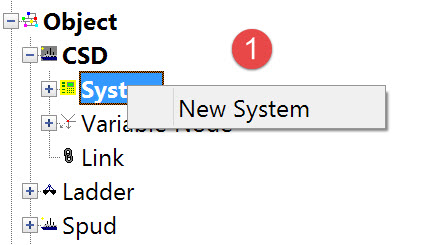

The following dialog opens. It is the first page of a wizard that steps you through the system definition process.
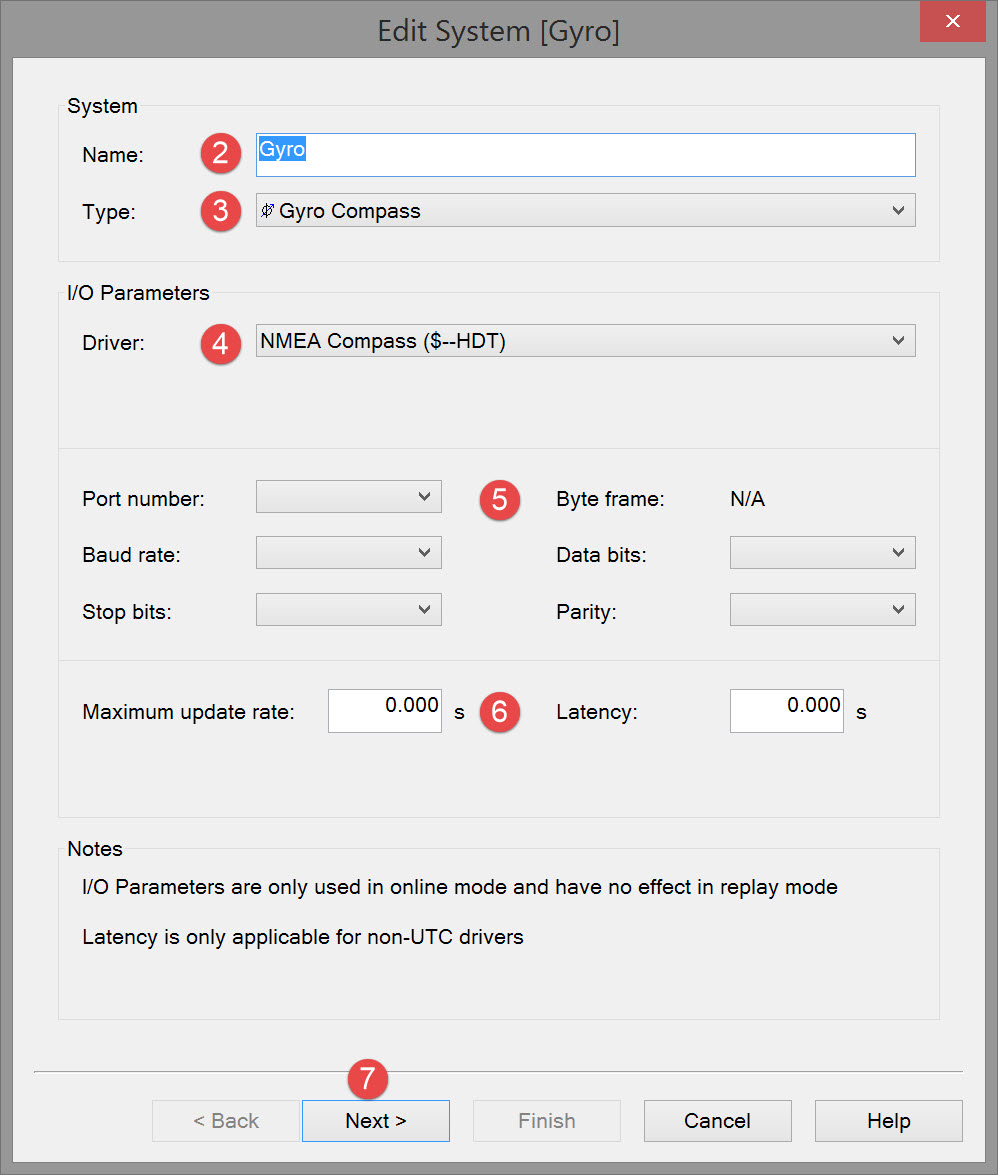


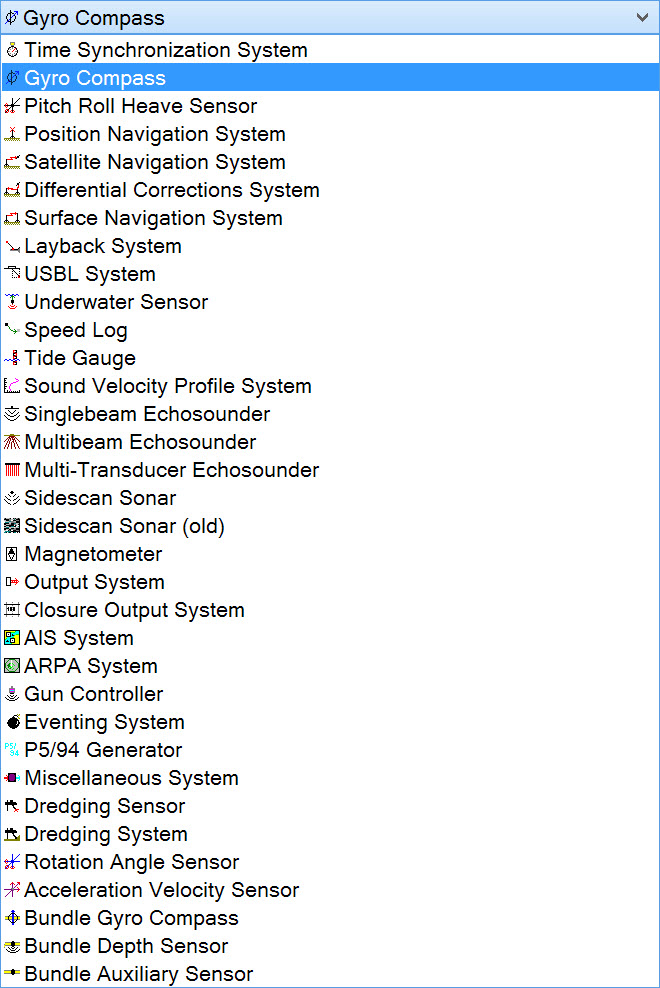

Note that the interfacing can be either serial or network so make sure to select the correct type.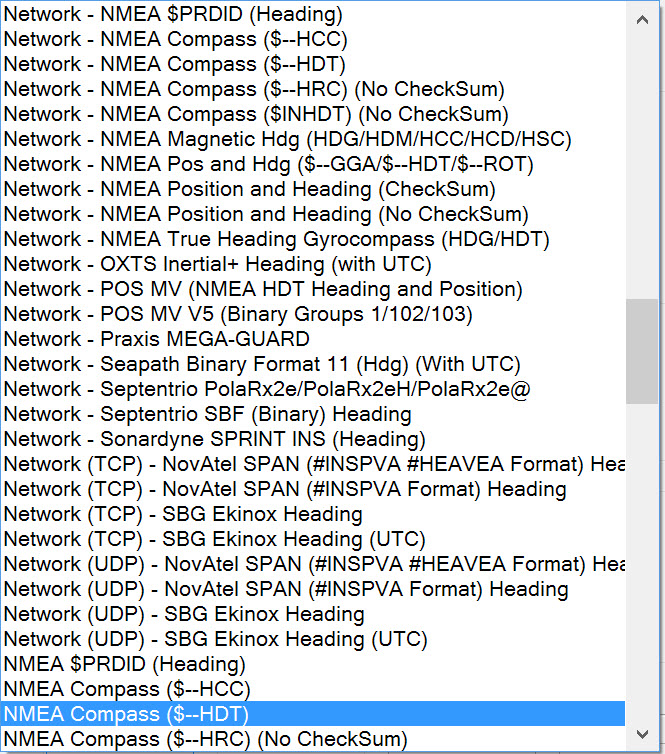

Please refer to A Note on Interfacing Parameters.


| Updates | |
|---|---|
| Maximum update rate | Enter a value to determine how often data will be decoded by the interface driver. Some equipment is capable of outputting data at high output rates, but it may not be necessary to use each update. A gyro system may for example output values tens of times per second, where 10 times per second is sufficient. In this case, enter a value of 0.10s. Any data not decoded by the driver is lost and cannot be recovered later. |
| Latency | Latency is the time between the actual measurement made in the gyro system and the time the data message arrives at the port. The time in QINSy will thus be the arrival time corrected with the latency. Modern gyro systems will exhibit no latency, or will have compensated for the latency in the time tag of each data message. |

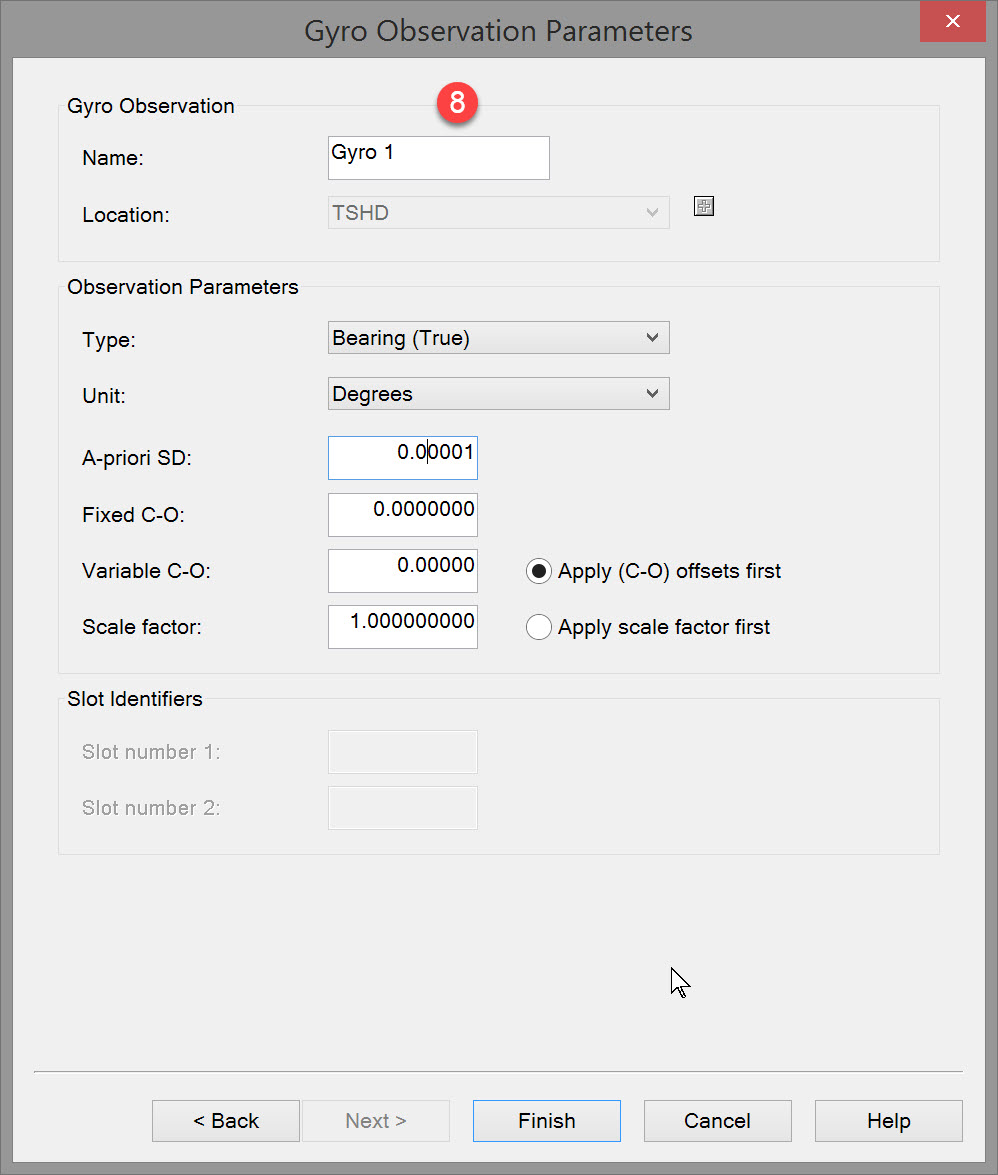

| Name | Enter a name for the gyro. |
| Location | Select the object the gyro is located on. No offsets are required for a heading system. The heading is applied as input into a rotation matrix. If you have been following this Howto step by step there will be several objects in the drop down list. Typically the gyro is on the pontoon. |
| Observation Parameters | |
|---|---|
| Type | Select Bearing (True), only option. |
| Unit | Select the type of units the gyro is outputting. Options are: Degrees, Grads, Radians, Arc Minutes, Arc Seconds. In case the unit is not obvious check the settings in the gyro itself. |
| A-priori SD | Enter the a-priori SD value of the gyro. Usually the default value is acceptable. |
| Fixed C-O | Enter fixed C-O correction. Fixed (C-O) corrections do not vary over time or location and must be recorded in the same measurement unit as the observation they refer to. |
| Variable C-O | Enter Variable C-O. The value for the Calculated minus Observed correction you enter will be added to the raw observation value. |
| Scale factor | The Scale Factor or Calculated divided by Observed correction should correct the raw observation measurement unit to the standard measurement unit. |
| Slot Identifiers | |
| Slot Number 1/2 | This parameter is applicable to a 'cloned gyro' which is frequently encountered in dredging operations. Typically the pontoon heading is 'cloned' to the ladder as explained in the section on Cloned Gyro. A slot number/identification is assigned when defining the cloned heading which is selected here. |

Return to: top of page
Return to: Trailing Suction Hopper Dredger (THSD) - System Definitions
